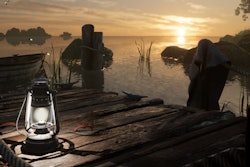
Gaming in radiology education has begun to take hold as another way to teach residents the skills they need for clinical practice. Five principles are key when creating a gaming curriculum, according to a review in the August issue of Academic Radiology.
Games used in medical education call on participants to practice making complex decisions, wrote a team led by Dr. Omer Awan of the University of Maryland School of Medicine in Baltimore.
"A game will attempt to give players/trainees pertinent knowledge or skills necessary for their success," they wrote. "In the case of diagnostic radiology, the acquired skills translate to success in interpreting radiology exams."
The trend toward using games with radiology trainees demonstrates how much radiology education has evolved, the researchers noted.
"With the transition from the oral board examination to the written CORE exam consisting of multiple-choice questions, education that seeks to engage trainees with interactive content in lectures has come to the forefront," the group wrote.
Awan and colleagues sought to explore the radiology gaming trend and its importance, as well as the principles behind it. The group listed five ways to create an effective gaming curriculum (Acad Radiol, August 2019, Vol. 26:8, pp. 1127-1136).
- Offer interactivity and positive feedback. Educational games should spark direct interaction with learners and offer them feedback. "Feedback ... must provide the learners with a sense of their current level of mastery, or lack thereof, with helpful suggestions to correct mistakes or misconceptions," the group wrote.
- Set worthy goals. A gaming experience should have clear goals that are achievable and hold meaning for the learner, Awan and colleagues noted. "For the radiologist, goals should enhance patient care and outcomes," they explained.
- Emphasize growth. Educational games should allow learners to experience success. "Incremental success encourages learners and provides them with a sense of achievement and pride as they grow in knowledge and confidence," the authors wrote.
- Create a safe environment. Students should be given the opportunity to fail within the game in a safe environment, according to Awan's team. "The lessons from failure must be embraced as a learning opportunity," the group noted.
- Make use of the senses. "Providing varied interactions, information presentation techniques, and strategies are helpful to keep the learner engaged," the team wrote.
Gaming in radiology education has significant potential for radiology training, according to Awan's team.
"In theory, application of science gaming in radiology can improve patient safety, standardize radiology education and quality, and reduce costs," the group concluded. "With more residency programs seeking to find new ways to revamp their educational curriculum, gaming is providing a unique learning paradigm that offers enormous potential to the learner in terms of shaping educational attitudes, behavior, and knowledge."




















